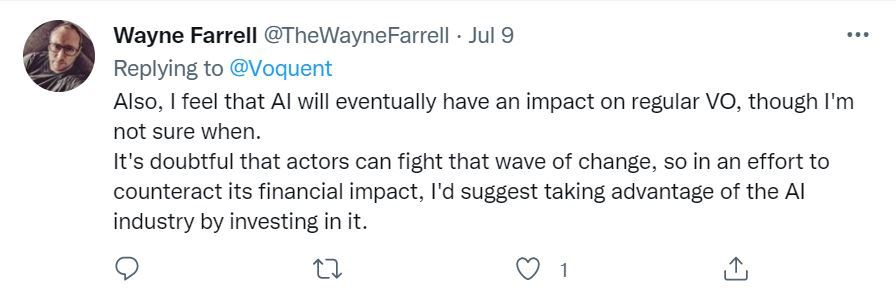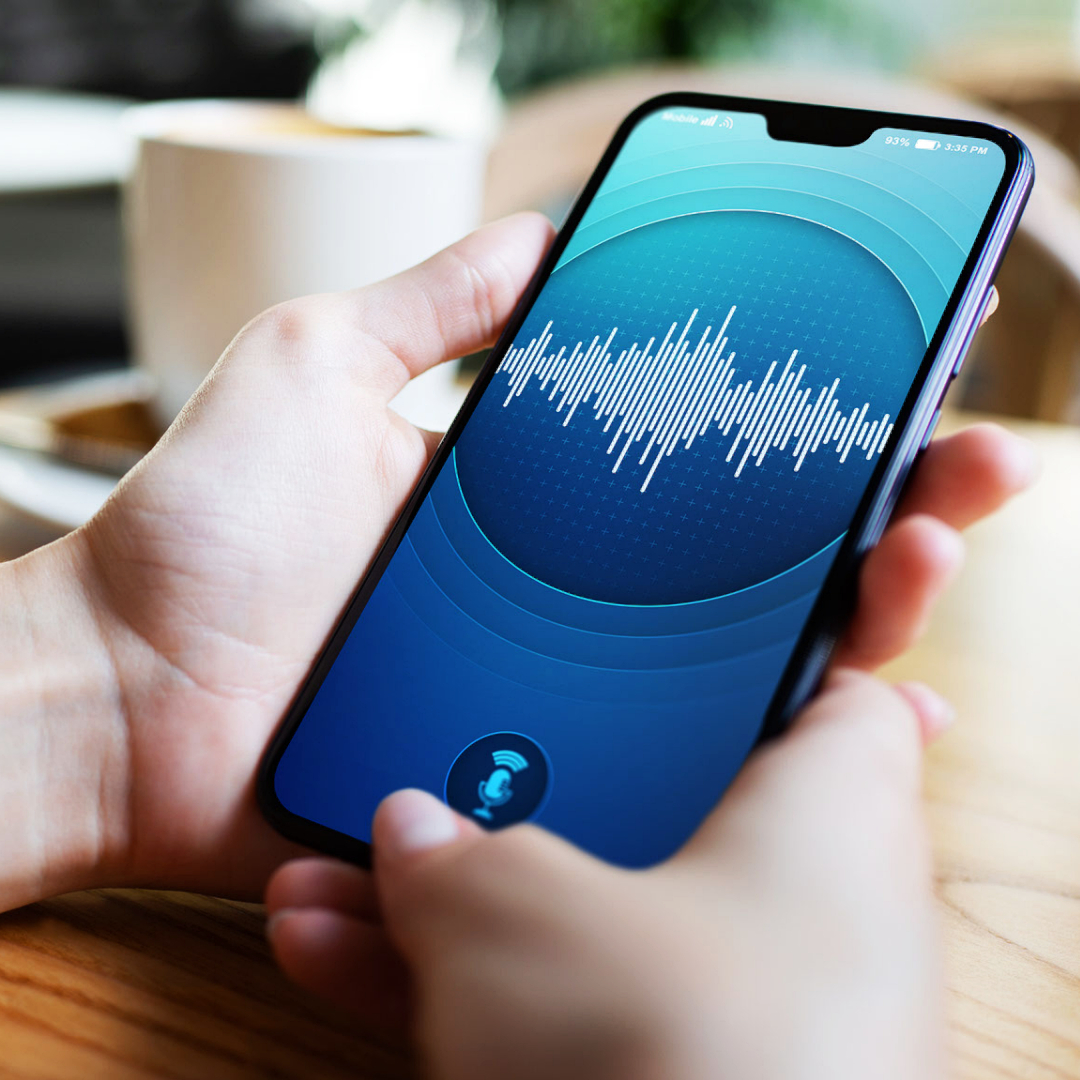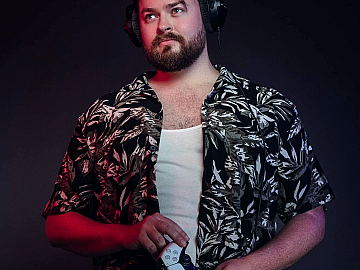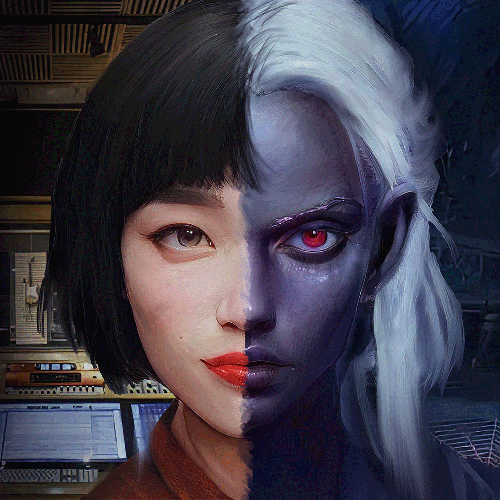From trends and technology to marketplaces and the metaverse – the voice-over industry will see many changes in the future.
Predicting the future of the voice-over industry is no easy task – where do you start?
Any small adjustment within any aspect of voice-over or the adjacent industries has the power to change the future. Some predictions are much more likely than others, but for a few, it’s just a matter of time.
Voice actors, what is the future of the voice-over industry? What trends and changes will we see?
Some responses may be used in a blog post!
— Voquent Voices – Any Language. Any Accent. (@Voquent) July 8, 2022
Luckily for us, we had the Voquent community on our side to offer their help and opinions. So, let’s discover if the future of the voice-over industry looks bright or if the robots are taking over after all.

Current Voice-Over trends
Before we look at the possible futures of the voice-over industry, let’s look back at the last few years. We’ve seen various shifts and trends come into place due to Covid-19. Voice actors had to find a way to adapt to the global effects of Coronavirus and keep the industry alive, with no access to studios and many productions on hold. But here’s the thing… we did it!
Home Studios & Remote Productions
The number of voice actors with home studios has dramatically increased since 2019, and so did the number of remote productions. With audio-visual sharing tools allowing us to communicate globally, remote live directing became the new normal. Voice actors quickly adjusted and proved that working from home would not reduce audio quality or performance.

Now that the voice-over industry has tried and tested this method, we know it works. The future of voice-over will undoubtedly continue to see the rise in home studios and remote productions. They allow us to collaborate from any international location, bringing together talent who might not have had the opportunity pre-covid.
eLearning
The eLearning industry also proved its worth during covid. With much of the world stuck at home and unable to work, people filled their time with learning new skills. Online courses have seen an enormous rise in viewership and proven how successful they can be. This resulted in an increased number of voice-over jobs for eLearning, and this trend doesn’t seem to be slowing down.

The education industry also had to adapt to create audio-visual assets to teach. Schools and universities not only took to online learning but have seen improvements in attitudes towards eLearning, engagement, and outcomes. The eLearning industry is even expected to be worth a total of $200 billion by 2024. Clearly, eLearning is a viable alternative to traditional education and, therefore, will continue to trend in the future of the voice-over industry.
Revenue Streams
Brands are moving away from using agencies. Many have begun building in-house creative teams, creating a database of reliable freelancers to work with regularly, or using online casting platforms. This shift reduces the importance of voice actors securing representation and has created a trend in voice-over self-marketing. Offering your services on multiple platforms with your own website and utilising the potential of social media will become even more critical in the future. The more revenue streams for voice actors, the more potential work!
Technology
Technological advancements are the driving force of shifts in the voice-over industry. Not only does this concern the tech that we use, but the other sectors that we provide voice-over for. Film, videogames, and many other creative mediums continue improving our consumption of audio-visual content. This will inevitably result in interesting changes to voice-over production, consumption, and how voice actors work. So, what could these changes be?
Virtual Reality & Immersion
While the primary role of voice actors won’t change, how we consume voice-over will. Virtual reality has been a hot topic for a while now, but we are yet to see it really find its place in mainstream media consumption. As VR technology continues to improve, it’s only a matter of time before the entertainment industries capitalise on VR’s unique features.

We don’t just mean voice-over in VR, but voice-over as VR. This audio moves as the user does, with the ability to hear the direction a sound is coming from to create total audio realism. Picture this: cinema audiences wearing physical headsets that allow full spatial audio. Currently, cinemas have “surround sound,” as in a few large speakers to give the illusion that you are in the middle of the action. However, the reality is that complete spatial audio immersion can only be achieved with a full 360 range of directions. This can also be applied to at-home media such as gaming and television.
If this technology can improve how we hear audio and comes with a cheaper price tag than huge speakers littered around the room, then why would it not be seen in the future of these industries.
The Price of Tech
While technology will continue to be improved and built upon, the industry-standard recording equipment will change at a slower pace. The quality of voice-over currently doesn’t have enough issues to require drastic change. This means that most improvements to microphones and headsets will be in making them cheaper to build and sell.
The average price of industry-standard tech will slowly drop. This may mean we will see even more home studios as they require less investment or more voice actors who would have an easier way in for the same reason.
Tech-Savvy Talent & Specialists
With the increase in home studios, we have already started to see this shift towards tech-savvy voice actors. As more and more tech makes it into the home, voice actors are learning more about audio production. There is less need to rely on studios and audio producers for simple projects.
Freelancing platforms have allowed some voice actors to capitalise on multiple skills. When a client lacks budget, a voice actor who can provide voice-over and edit the recordings themselves becomes a very beneficial deal. We may begin to see a divide between these cheaper all-in-one services for smaller projects and multiple specialists for larger productions.
Although contradictory, more specialisation within the voice-over industry is also likely. We will see fewer generalist voice actors and more talent leaning towards a specific industry, niche, or voice-over medium with particular training and skills.
Audio & Video Editing
The ways we edit audio and video are guaranteed to change in the future. Editing software is always updating and slowly small improvements will continue to be implemented. However, rather than focusing on these minor improvements, we thought we would look at the bigger picture – What software could completely revolutionise how we edit audio-visual projects?
Audio
What if missing some of the words didn’t require a new take?
Soon, we may be able to change what was said, after recording. First seen in 2016, Adobe’s Project VoCo allows the user to edit a transcript which simultaneously edits the recording to match. You can remove words, change the order, or even add ones that weren’t said in the first place. Essentially, project VoCo is a synthetic voice that can be created from only 20 minutes of hearing a voice recording.
But Voquent! Synthetic voices could be a massive problem for the voice-over industry!
We hear you, but consider this software from an editing perspective only. This was never and probably will never be released to the public. Creating a realistic voice-over with no input from a voice actor is a scary thought, but using this software to edit a real voice-over would be helpful.
This then presents a new problem – how do you control what people do with it?
Video
Similarly, synthesizing video has been a hot topic for some time now. It could cause many issues with the ability to create fake footage that is sold as real. However, in a perfect world where nobody abuses this potential, synthesizing video could completely change audio-visual localization.
When it comes to dubbing, the trickiest part of the process is matching the new voice-over with the original mouth movements. Trying to force a new language entirely into these predetermined time slots requires transcreation over translation so that the length of voice lines can be adjusted to fit the time needed. Still, the mouth movements are rarely a perfect match with the new language.
Synthesizing the video would allow the original footage to be edited through AI so that the mouth movements do match the dub. This would completely eradicate the primary reservation audiences have with dubbed content. One film would not only be available in all languages, but the mouth movements of the actors would also match each language. The ability to make this a reality is already out there, so the future may see this become the norm.
AI mouth movements exist currently in some videogames, but only time will tell if this becomes a regular industry practice in live-action content. While impressive, the software isn’t perfect, and it will take time to improve AI dubbing localization to the necessary standard. If not improved, we may never get to see our favourite foreign content with the perfect dub.
Concerns
AI vs. Real Voices
AI does seem to come up a lot when predicting the future of voice-over, making many voice actors a little nervous. So, will AI become more prevalent in the industry? – absolutely, but that doesn’t mean you should worry about it.

We previously discussed editing real voices with AI, but creating AI voice-over with a fake voice is different entirely. As this technology improves and becomes cheaper, it’s understandable to be concerned. Apps like TikTok heavily use AI voice-over because it’s easy, but nobody likes how it sounds. People prefer the sound of a real voice, it’s a fact, and this will never change for expressive and performance-based voice-over.

AI voices may evolve to the level where we hear them more in short-form content and accessibility within technology and apps. However, if voice-over requires any level of performance or emotion, AI and synthetic voices simply won’t cut it without at least being based on a real voice in the first place. We are a long way from AI voice-over matching the quality of a real voice, and it’s doubtful that this will ever be the case.
Voice-Over Rates & Marketplaces
As more and more voice actors join the industry, competition is heating up. Or is it?
There are indeed a lot of voice actors out there, but the industry isn’t as oversaturated as some may suggest. Just as the amount of talent has increased, so has the global demand for content and the number of jobs. However, with so much choice in who to cast for a project, it can be difficult for new talent to find a way in. This leads to voice actors on some freelancing sites offering meagre rates just to try and get enough experience to be viable for higher rates.

It’s difficult to blame someone for trying to make their dreams come true. Still, these exceptionally low rates are undercutting professional voice artists and the industry structure already in place. It brings down the average price of voice-over as a service. It also places the power in the hands of those who need you. Why would a business pay fairly when voice actors are competing to out-cheap each other for the gig?
As stated previously in this article, we may begin to see an even more significant divide in the industry between cheaper and professional voice-overs. Rather than one voice-over marketplace, there are debatably already two: cheap all-in-one services (for those concerned about price) & professional specialists (for those concerned about quality).
Changes in the Consumption of Media
Videogames Moving to Mobile
Technology is getting more and more impressive with each new generation of smartphones. Higher power, faster processors, and more accessories such as VR attachments make them an increasingly viable gaming option.
Some major gaming titles have moved to mobile in the last few years and found massive success from the platform. Genshin Impact, for example, has seen 85 million app downloads between September 2020 and May 2022. PUBG Mobile seems to be the most popular console/ pc game that turned to smartphones, with a total of 730 million downloads between February 2018 and June 2020.
Mobile also proves a lucrative opportunity for games that use in-app purchases. Genshin Impact made $100 million in only its first 13 days as a mobile app. PUBG Mobile has crushed all competition, generating $5 billion as of March 2021 – not bad considering its free-to-play.
What does this mean for the future of voice-over?
With mobile games proving so commercially successful and the added benefit of more people having a smartphone in their pocket than a gaming console at home, the demand for gaming content is expected to continue growing. More games, more characters, more voice-over.
Streaming & Localization
We have already seen online streaming platforms dominate the industry, becoming the new normal when it comes to television. A more recent trend is their focus on localization as a strategy to continue growth.

Currently, Netflix’s content can be watched in 62 different languages worldwide. With each original they produce, this show or film must be dubbed for the international platform, resulting in tremendous success. The number of countries that Netflix is available in has gradually been growing over the years, and the number of languages that content must be dubbed in has therefore also continued to grow.
These localization efforts are expected to continue until each piece of content is available in all global languages, followed by the other major streaming platforms such as Disney+ and Amazon Prime doing the same. This creates considerable work for voice actors around the world, specifically for dubbing services.
Growing Markets & the Metaverse
The demand for quality content isn’t slowing down, but it is adapting to the times. The major players in our current entertainment industry, such as streaming platforms and videogames, continue to report growth and demand for content. This, in turn, requires more voice-over. However, the demand for newer, more immersive media markets is the most significant growth.

Online streamers, gaming, esports, and social media allow audiences to engage with content. This is quickly becoming the most popular form of entertainment as more and more people invest in their online presence and identity.
The metaverse is one particularly exciting prediction for the future. Currently, it’s more of a concept than a specific digital space, where users can attend virtual events, dress up their avatars, and meet their friends in the digital world. It might sound a little sci-fi, but it’s already happening.

In 2019 Fortnite held its first in-game live concert featuring Marshmello, which 10.7 million unique players attended. In 2021 Fortnite had another in-game show featuring Ariana Grande, with an attendance of 27.7 million. Where the first few were just virtual concerts, they are now broader events where players can browse upcoming content (be marketed to) and choose from an array of skins to wear (go shopping). Epic Games’ chief creative officer even described it as “an opportunity to almost create a new medium.” The metaverse is this new medium, and it’s expected to become a much bigger deal in the future. If users spend more time in this digital space, this will create more need for voice-over and the added potential of live in-world voice-over.
Casting & Clients
The voice-over casting process itself is sure to change in the future. The last few years have seen a few shifts in the methods of casting talent. Soon, we will likely see these changes become the norm throughout industry practice. So, what are they?
Auditions are out
Casting directors are realising that auditions simply waste time. Casting calls, waiting for recordings, and then searching through them to find what you were looking for is a tiresome and unnecessary process. After all, they already know what they want to hear.
That’s where Voquent comes in to offer speed and authenticity. We already provide the opportunity for casting decisions based on demonstratable capability, which can be easily assessed. Demos are the answer because they are instantly available and benefit both clients and talent. Voice actors don’t want to audition for every gig going when a portfolio of varied Demos already displays their capability.
Authenticity is in
With the market growth for content localisation and the social movement towards authentic casting, using genuine accents and dialects is the way forward. However, finding the right pick on location is not always easy. This is why the option of remote recording and a straightforward authentication process will be essential in the future of the casting process – if only there were somewhere to find a service like this…
Ultimately, we don’t know the future. Not for sure.
There may even be potential futures of the voice-over industry that are currently incomprehensible, just waiting for that one technological advancement that changes everything.
The Voquent community is clearly (and understandably) most concerned with AI while optimistic about new technology’s opportunities.
Only one thing is for sure: The voice-over industry continues to grow and expand. New technologies and digital spaces are creating more work, and just like voice-over had to adjust to overcome the effects of covid, the industry will continue to re-shape itself when challenges arise.
Sign up to become a voice actor
Follow us on Twitter
Sometimes we include links to online retail stores such as Amazon. As an Amazon Associate, if you click on a link and make a
purchase, we may receive a small commission at no additional cost to you.

















